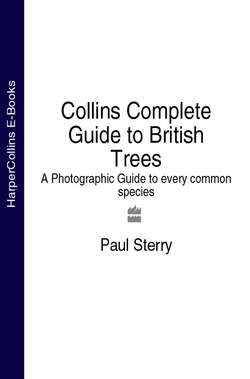Читать книгу Collins Complete Guide to British Trees: A Photographic Guide to every common species - Paul Sterry - Страница 29
ALIEN CONIFER FORESTS
ОглавлениеIf you encounter conifers in Britain outside the native range of the Scots Pine in central Scotland, then (with the exception of a very few Yew woods) their occurrence will not be natural. Regimented plantations are easy enough to spot, with trees of uniform age planted a standard distance from one another. But even isolated clumps of Scots Pine found on a southern heathland are at best going to be naturalised trees, their seeds having spread from nearby plantations.
Does the fact that most conifers in Britain are introduced matter? In the case of isolated trees or small clumps, perhaps not. But, when it comes to the impact upon native habitats and wildlife, then plantations are a different matter. The dense manner in which they are planted effectively destroys the natural vegetation that once existed there – just think of the scandalous destruction of areas of Scotland’s Flow Country if you are in any doubt. But even naturalising conifers can be a threat, endangering already diminishing areas of heath-land.
The benefits of conifer plantations to a select band of birds – Crossbills in particular – is often cited in favour of tolerance, although of course not all planted conifer species produce cones that are accessible to these birds. However, anyone willing to take an overall ecological view of the process, rather than trying simply to look on the bright side of things, will realise that the losses, in wildlife terms, heavily outweigh the gains.
